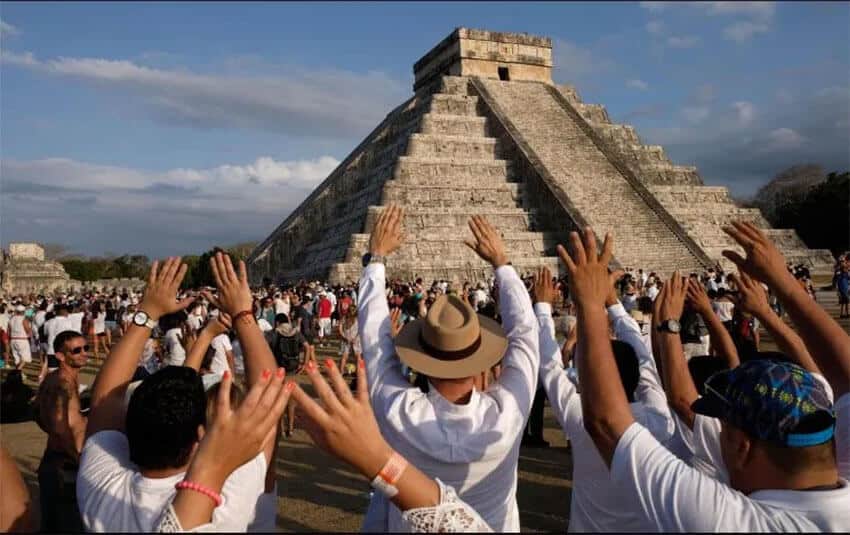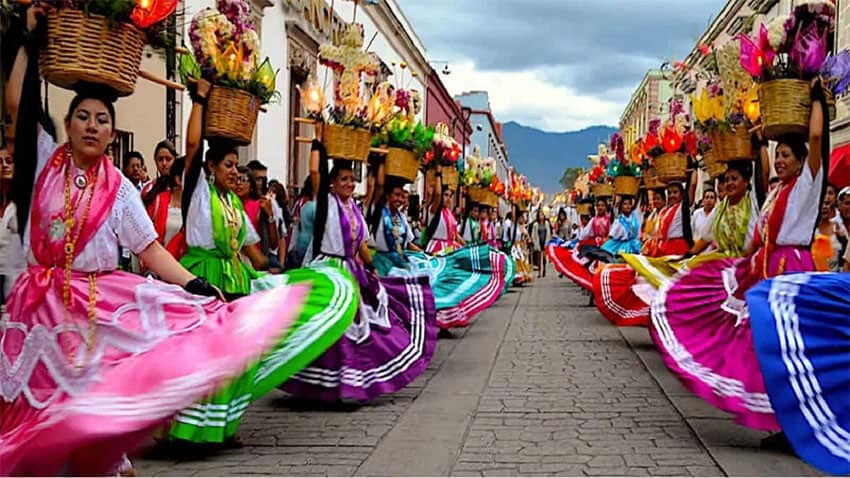With 31 of 32 states currently low risk green on the federal government’s coronavirus stoplight map, Mexico’s economic, social and cultural life is bouncing back as the omicron-fueled fourth wave continues to recede.
And the vibrancy of the nation’s cities and towns – much diminished during the past two years as Mexico endured one of the world’s worst coronavirus outbreaks – is only set to increase, with a range of events scheduled to take place in the weeks and months ahead.
Mexico City, the country’s coronavirus epicenter since the start of the pandemic, is preparing to stage a spring festival, Yucatán’s Chichén Itzá archaeological site is gearing up to host a spring equinox event, Aguascalientes is organizing its renowned annual fair and Oaxaca is getting ready to welcome visitors to a large ethnic heritage festival slated to run later this year.
The Festival de Primavera (Spring Festival) will take place in Mexico City’s historic center this coming long weekend, with more than 50 free activities on offer in 20 locations, including the zócalo, Plaza de Santo Domingo and Plaza Garibaldi, the capital’s home of mariachi music.
Among the scheduled activities is a massive dance event in honor of legendary composer and singer Armando Manzanero, who died in late 2020.

The ancient Mayan city of Chichén Itzá will welcome up to 15,000 visitors per day for the “descent of the serpent,” an equinox phenomenon in which light hits the Kukulcán pyramid in such a way that the form of a Mayan snake deity appears. Equinox events will be held Saturday, Sunday and Monday, while the Teotihuacán and El Cerrito archaeological sites in México state and Querétaro, respectively, and the magical town of Bernal in the latter state, will also host equinox events this Sunday.
For the first time since 2019, Aguascalientes will stage the San Marcos Fair – the largest national fair in Latin America and one of the 10 largest in the world – between April 16 and May 8. The event, which attracts millions of visitors, contributes to 5% of Aguascalientes’ GDP, the newspaper Milenio reported.
Oaxaca’s most famous festival, the Guelaguetza, will return to the state capital on July 25 and August 1, Governor Alejandro Murat announced.
The festival, which brings the indigenous peoples of Oaxaca together to showcase their heritage and traditions in the form of intricate traditional garments, dances, music and food, was canceled as an in-person event in both 2020 and 2021 due to the pandemic.
Another state where cultural life will be reinvigorated in 2022 is Guanajuato, which will host events including the Leather and Footwear Fair and the International Cervantino Festival, one of Latin America’s biggest cultural events.
Some Easter religious events, including the Procession of Silence in San Luis Potosí, are slated to go ahead for the first time since 2019, but the Passion Play event in Iztapalapa, Mexico City, will not be open to the public for a third consecutive year.

Play of another kind will be the order of the day in Quintana Roo, where up to 20,000 international spring breakers are expected to holiday this year.
Nayarit is also expecting a large influx of visitors to its coast during Semana Santa, or Holy Week, which begins on April 10. In the state capital Tepic, the Nayarit National Fair is already underway, with a range of events scheduled before its conclusion on March 27. The fair, which began last Thursday, is expected to generate an economic spillover of 120 million pesos (US $5.7 million).
As the coronavirus threat diminishes, there has been an “avalanche” of reservations for parties and other events in México state, according to business events association AEEEM.
“The majority of clients are planning events for at least 100 people. … A lot already have reservations for May, June, July and December,” it said. “It looks set to be a good year, we’ll be able to completely recover.”
Many states have eased their coronavirus restrictions after switching to green on the stoplight map, increasing maximum capacity levels at establishments such as bars and restaurants.
Authorities in Coahuila and Nuevo León announced late last week that citizens were no longer required to wear face masks in open-air public places, while the Mexico City government said it was shutting down its COVID-19 testing kiosks, with free-of-charge testing to be limited to permanent public health facilities.
The reactivation of cultural life and further easing of restrictions come as the country faces a much-improved coronavirus situation after case numbers hit a new monthly high of almost 1 million in January.
The seven-day average for daily case numbers is currently 5,977, a figure just 14% of the peak recorded on January 23, according to the Reuters COVID-19 tracker. Reuters also said that the average number of deaths reported per day has fallen by more than 230 over the past three weeks. The seven-day average for daily fatalities is currently 178.
Mexico’s accumulated confirmed case tally is currently 5.6 million, the 20th highest total in the world despite the country’s low testing rate, while COVID-19 fatalities number 321,103, the world’s fifth highest death toll.
With reports from Milenio and AS
